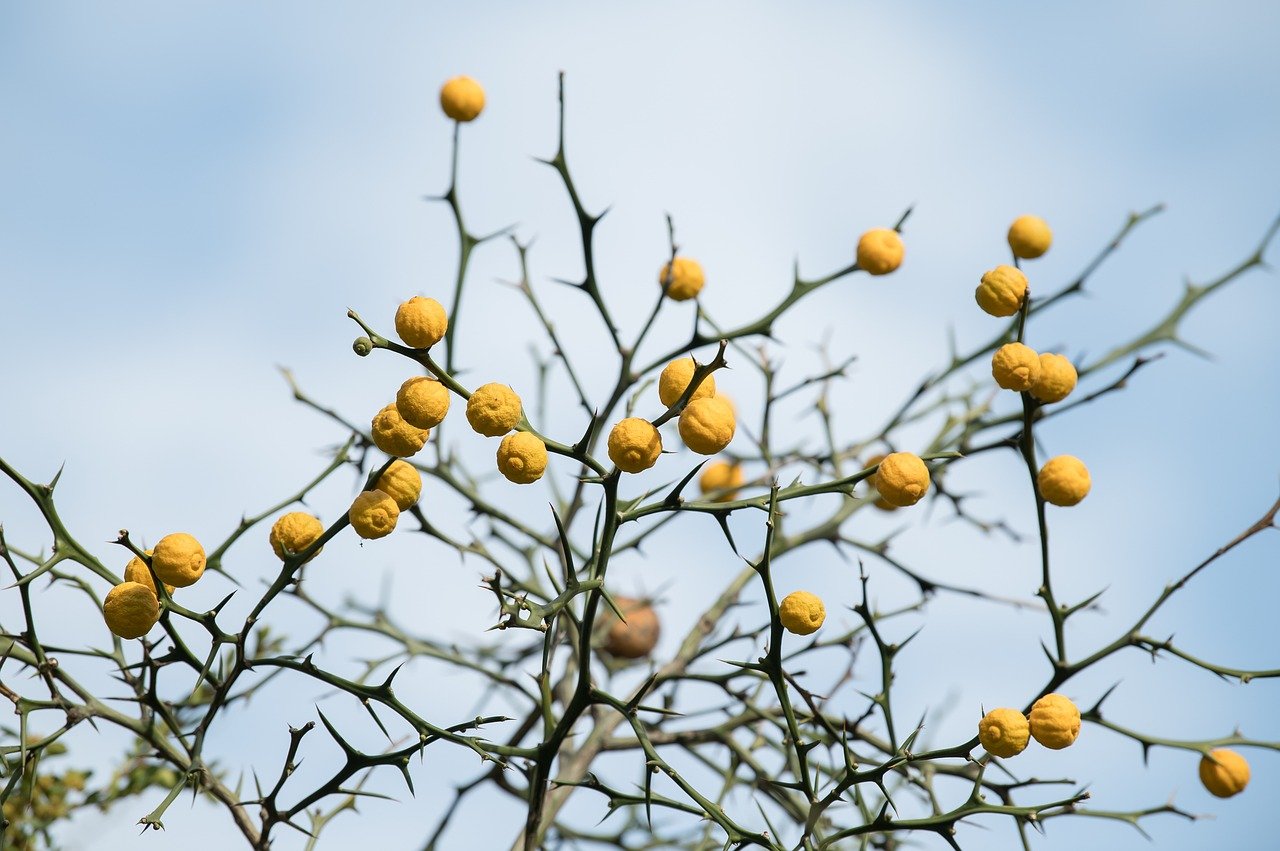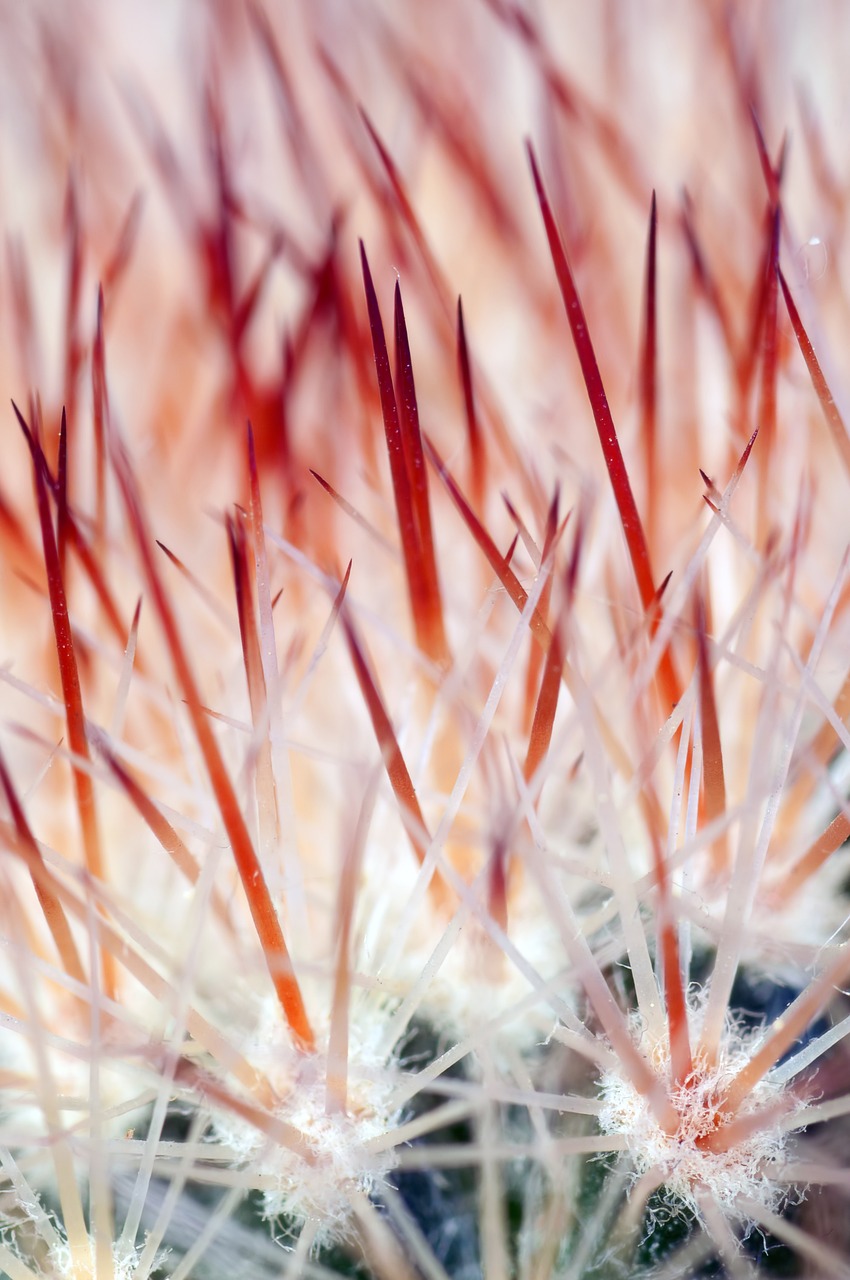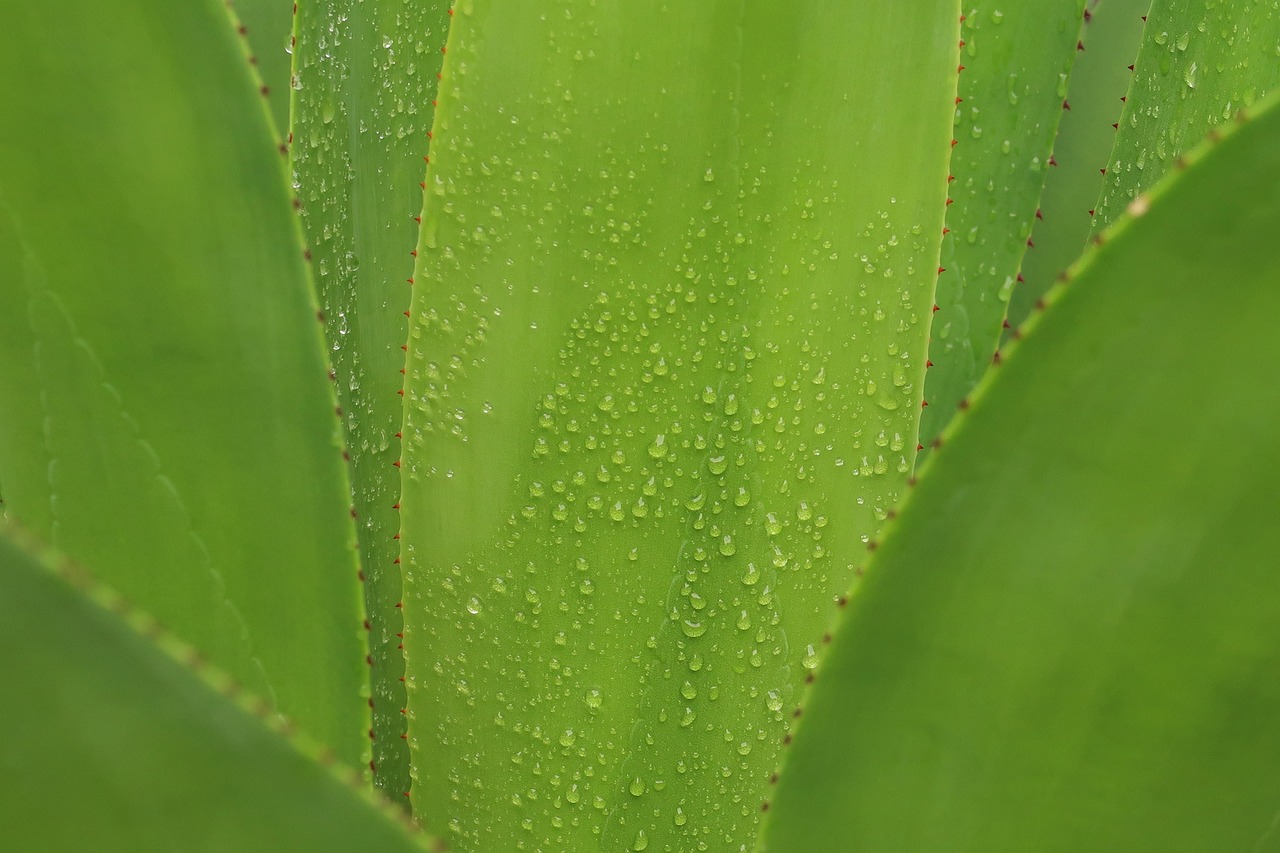Trees with thorns are fascinating natural wonders that often capture our attention. These unique plants serve multiple purposes in their ecosystems. Their prickly defenses deter herbivores, while their majestic forms provide shelter and habitat for various wildlife. Understanding these thorny trees can reveal much about the resilience of nature.
Thorns are modified stems or branches that develop on certain tree species. They are a form of defense against herbivores, protecting the tree’s leaves, fruits, and bark from being consumed. In addition to serving as a protective mechanism, thorns can also play a role in water conservation and nutrient acquisition. This article will delve into the world of thorny trees, exploring their characteristics, benefits, and examples from around the globe.

Characteristics of Thorny Trees
Thorny trees are not just defined by their thorns; they possess a variety of characteristics that contribute to their survival and adaptability. Below are some key features that many thorny trees share:
- Defensive Structures: Thorns can vary in size, shape, and density. Some trees have long, sharp thorns, while others possess short, stubby ones.
- Leaf Adaptations: Many thorny trees have small or modified leaves to reduce water loss, especially in arid environments.
- Growth Forms: These trees often have a bushy or densely branched appearance, which can further deter animals from approaching.
- Reproductive Strategies: Some thorny species produce fruits that are attractive to birds, ensuring seed dispersal while keeping larger herbivores at bay.
The Role of Thorns in Ecosystems
The presence of thorny trees in an ecosystem contributes significantly to biodiversity. They provide numerous benefits for both flora and fauna. Here are some roles that thorny trees play:
- Habitat Creation: The dense branches of thorny trees create shelters for various birds and small mammals.
- Food Source: The fruits and flowers of thorny trees often attract pollinators and herbivores that are adapted to deal with the thorns.
- Erosion Control: Their extensive root systems help stabilize soil and prevent erosion in vulnerable areas.
- Biodiversity Support: Thorny trees are often part of complex food webs, supporting a variety of species, including insects and larger wildlife.
Examples of Thorny Trees

Across the world, there are numerous species of thorny trees, each adapted to their specific environments. Below is a table showcasing some notable examples along with their characteristics:
| Tree Species | Native Region | Type of Thorn | Notable Feature |
|---|---|---|---|
| Acacia | Africa, Australia | Modified branches | Produces sweet gum that attracts animals |
| Citrus | Tropical Regions | Short thorns | Produces edible fruits like oranges and lemons |
| Hawthorn (Crataegus) | Europe, North America | Long sharp thorns | Known for its medicinal properties |
| Pear (Pyrus) | Asia, Europe | Short spines | Produces edible pears favored by wildlife |
These examples illustrate the diversity among thorny trees and highlight their importance in different ecosystems. Understanding these unique plants can deepen our appreciation for the complexity of nature and the adaptations that allow life to thrive in various conditions.
Adaptations and Survival Strategies

Thorny trees have evolved a variety of adaptations that enhance their survival in diverse environments. These adaptations are crucial for their growth, reproduction, and overall health. Below are some key survival strategies employed by thorny trees:
Water Conservation
In arid regions, water conservation is essential for survival. Many thorny trees possess adaptations that help them minimize water loss:
- Reduced Leaf Size: Smaller leaves reduce the surface area for transpiration, helping to conserve moisture.
- Thickened Cuticle: A waxy layer on leaves can further prevent water loss through evaporation.
- Modified Photosynthesis: Some species utilize CAM (Crassulacean Acid Metabolism) photosynthesis, allowing them to open their stomata at night to reduce water loss.
Thorns as Defense Mechanisms
The thorns themselves serve as a critical defense against herbivores. The presence of thorns discourages animals from feeding on the tree. However, different species have developed unique adaptations in their thorn structures:
- Variation in Thorn Size and Shape: Some trees have long, sharp thorns that can inflict pain, while others have small, dense thorns that create a barrier.
- Location of Thorns: Thorns may be concentrated on young branches or around reproductive structures, protecting vital parts of the tree.
- Coloration: Some species have thorns that blend into their surroundings, making them less visible to herbivores.
Ecological Relationships
The interactions between thorny trees and other organisms highlight the complexity of ecosystems. These relationships can be mutually beneficial, enhancing survival for both parties. Here are some notable ecological relationships:
Mutualism with Animals
Many thorny trees engage in mutualistic relationships with animals. These relationships provide benefits for both the plant and the animal:
- Seed Dispersal: Birds and mammals often eat the fruits of thorny trees, helping in seed dispersal while providing nourishment.
- Nesting Sites: The dense foliage and protective thorns provide safe nesting sites for various bird species.
- Pest Control: Certain animals may feed on pests that threaten the health of the tree, creating a balance within the ecosystem.
Interactions with Other Plants
Thorny trees can also influence the growth and survival of neighboring plants. Their presence can alter competitive dynamics within an ecosystem:
- Shade Production: The dense canopy of thorny trees can limit sunlight for smaller plants, affecting their growth.
- Nutrient Cycling: The leaf litter from thorny trees can enrich the soil, benefiting other plants in the vicinity.
- Allelopathy: Some thorny species release chemicals that inhibit the growth of nearby plants, reducing competition for resources.
Cultural Significance of Thorny Trees
Thorny trees hold cultural significance in many societies around the world. They are often associated with various beliefs and traditions:
- Symbolism: In some cultures, thorns symbolize protection or resilience. They may represent overcoming adversity.
- Traditional Uses: Various parts of thorny trees are used in traditional medicine or crafts. For example, bark or leaves might be used for healing purposes.
- Landscaping and Aesthetics: Thorny trees are sometimes planted for their unique appearance and ability to deter unwanted wildlife in gardens and parks.
The intricate connections between thorny trees and their environments reveal a rich tapestry of life. These interactions highlight not only the survival strategies of these remarkable trees but also their importance in supporting biodiversity and cultural heritage.
Threats to Thorny Trees
Despite their robust adaptations and ecological importance, thorny trees face numerous threats that can jeopardize their survival. Understanding these threats is crucial for conservation efforts and maintaining biodiversity. Below are some of the primary challenges that thorny trees encounter:

Deforestation
Deforestation remains one of the most significant threats to thorny trees worldwide. The clearing of forests for agriculture, urban development, and logging leads to habitat loss. This can result in:
- Loss of Biodiversity: As habitats are destroyed, the diverse flora and fauna that rely on thorny trees are also affected.
- Soil Erosion: The removal of trees can lead to soil degradation and increased erosion, which affects the entire ecosystem.
- Climate Change: Deforestation contributes to climate change, further stressing the remaining tree populations.
Invasive Species
Invasive plant species pose another threat to native thorny trees. These species often outcompete native flora for resources, leading to:
- Resource Competition: Invasive species can consume nutrients and water, limiting what is available for native thorny trees.
- Pest Attraction: Some invasive plants may attract pests that can harm native trees.
- Altered Ecosystems: Invasive species can change soil chemistry and light availability, disrupting established ecosystems.
Conservation Efforts
To combat the threats facing thorny trees, various conservation measures are being implemented worldwide. These efforts aim to protect existing populations and restore damaged ecosystems:
Protected Areas
Establishing protected areas is a key strategy for conserving thorny trees. These areas help preserve natural habitats and promote biodiversity. Benefits include:
- Safe Havens: Protected areas provide safe environments where thorny trees can thrive without human interference.
- Research Opportunities: Conservation areas allow scientists to study ecosystems and develop better management practices.
- Public Education: These areas can serve as educational platforms, raising awareness about the importance of thorny trees and conservation.
Community Involvement
Engaging local communities in conservation efforts is essential for long-term success. Community-based initiatives can include:
- Awareness Campaigns: Educating local populations about the ecological benefits of thorny trees encourages protective attitudes.
- Sustainable Practices: Promoting sustainable land-use practices helps reduce the pressure on thorny tree populations.
- Restoration Projects: Involving locals in replanting native thorny species can restore degraded areas and enhance biodiversity.
The Future of Thorny Trees
The future of thorny trees hinges on our ability to address the challenges they face. Ongoing research and conservation efforts will play a vital role in ensuring these unique trees continue to thrive. Some aspects to consider include:
Research and Innovation
Advancements in research can provide insights into the biology of thorny trees, their ecological roles, and effective conservation strategies:
- Genetic Studies: Understanding genetic diversity within thorny tree populations can aid in their conservation and restoration.
- Ecosystem Services Assessment: Evaluating the ecosystem services provided by thorny trees helps highlight their importance in various environments.
- Climate Resilience Research: Investigating how thorny trees respond to climate change can assist in developing adaptive strategies for their survival.
Policy and Legislation
Effective policy and legislation are crucial for protecting thorny trees and their habitats. This can involve:
- Environmental Protection Laws: Implementing laws that protect natural habitats from destruction is essential for conservation.
- Sustainable Land Management Policies: Encouraging sustainable land practices can mitigate deforestation and habitat loss.
- International Cooperation: Collaborating with global organizations to address environmental issues can strengthen conservation efforts worldwide.
The combined efforts of individuals, communities, and governments will be vital in securing a future where thorny trees continue to play their essential roles in ecosystems around the world.
Future Research Directions
As we move forward, further research into thorny trees will be essential for understanding their complex roles in ecosystems. There are several areas that warrant exploration:
- Adaptation to Climate Change: Studying how thorny trees adapt to changing climates can provide insights into their resilience and inform conservation practices.
- Interaction with Insect Populations: Investigating the relationships between thorny trees and insect populations can reveal how these trees contribute to pest control and overall ecosystem health.
- Role in Carbon Sequestration: Assessing the capacity of thorny trees to sequester carbon can highlight their importance in mitigating climate change effects.
Such research can help not only in preserving thorny tree species but also in enhancing their contributions to ecological balance.
Community Engagement and Education
Raising awareness about the significance of thorny trees is vital for their conservation. Educational programs that engage communities can foster a deeper appreciation for these unique plants. Here are some ways to promote education and community involvement:
- Workshops and Seminars: Organizing events to educate the public about the ecological roles of thorny trees can inspire conservation efforts.
- School Programs: Integrating topics related to thorny trees into educational curricula can encourage younger generations to value biodiversity.
- Volunteer Opportunities: Providing community members with opportunities to participate in tree planting and maintenance can create a direct connection to local ecosystems.
Through education and engagement, communities can become stewards of their natural environments, leading to more effective conservation outcomes.
Challenges to Conservation Efforts
While there are numerous strategies for conserving thorny trees, challenges still exist. Some of these challenges include:
- Lack of Funding: Conservation initiatives often require significant financial support, which may be limited or inconsistent.
- Political Will: Effective conservation policies demand strong political backing, which can sometimes be lacking due to competing interests.
- Public Awareness: Many people may not recognize the importance of thorny trees, making it difficult to garner widespread support for conservation efforts.
Addressing these challenges requires collaboration among stakeholders, including government agencies, non-profit organizations, and local communities.
Conclusion
The exploration of thorny trees reveals their multifaceted roles in nature. These remarkable plants are not just prickly protectors; they are vital components of ecosystems that support biodiversity, contribute to soil health, and provide shelter for wildlife. Their adaptations, cultural significance, and ecological interactions highlight their importance in the natural world.
As we face increasing environmental challenges, the protection and preservation of thorny trees become even more critical. Through concerted efforts in research, community engagement, and policy development, we can ensure that these resilient trees continue to thrive. By valuing and protecting thorny trees, we also safeguard the intricate web of life they support, paving the way for a sustainable future.
In conclusion, embracing the complexity of thorny trees allows us to appreciate the profound connections between plants and their environments. As guardians of nature’s prickly protectors, we hold the responsibility to protect these invaluable species for generations to come.
